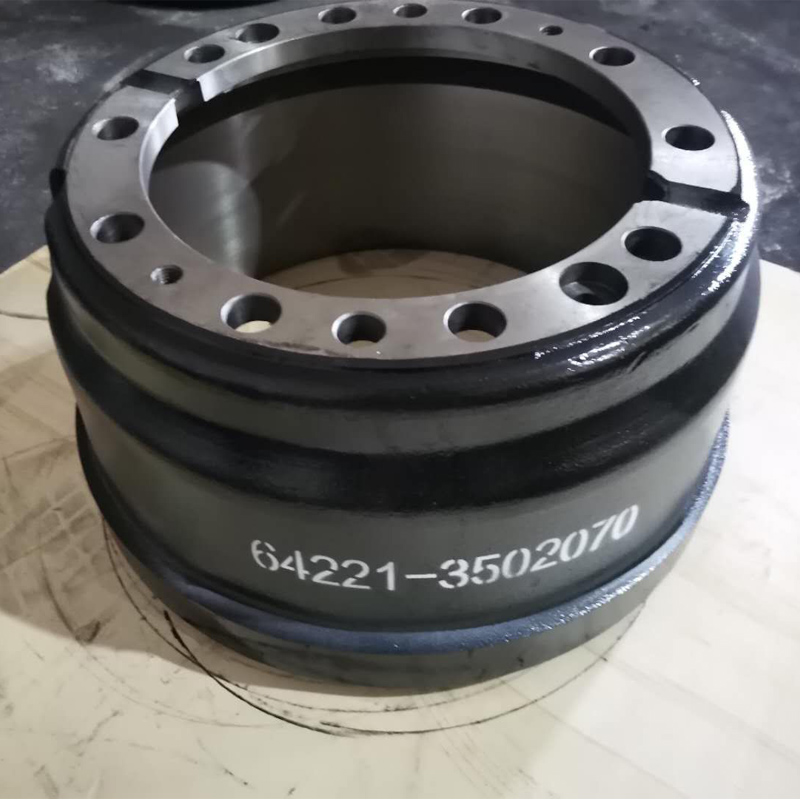Okt . 19, 2024 06:39 Back to list
Comparing Disc Brakes and Drum Brakes for Enhanced Vehicle Performance and Safety
Understanding Disc Brakes and Drum Brakes A Comprehensive Overview
Brakes are a critical component of any vehicle, ensuring safety and performance by allowing the driver to slow down or stop effectively. Among the various types of braking systems, disc brakes and drum brakes are the most common. Both have their unique characteristics, advantages, and disadvantages. Understanding these two systems can help vehicle buyers and enthusiasts make informed decisions when it comes to maintenance, upgrades, or purchasing a vehicle.
Disc Brakes Design and Functionality
Disc brakes consist of a rotating disc, typically made of cast iron or carbon composite, that is mounted on the wheel hub. When the driver presses the brake pedal, hydraulic fluid is forced through the brake lines, pushing the brake calipers. The calipers then squeeze friction pads against the surface of the disc, creating the necessary friction to slow down or stop the vehicle.
One of the main advantages of disc brakes is their superior heat dissipation. The exposed design allows for better airflow, which helps prevent brake fade—a condition that occurs when brakes overheat and lose effectiveness. This makes disc brakes particularly popular in high-performance vehicles and those used for towing, where heat buildup can be substantial.
Additionally, disc brakes typically provide more consistent performance over a range of conditions, including wet environments. They are also less prone to deformation over time compared to drum brakes, ensuring sustained performance throughout their lifespan.
Drum Brakes Design and Functionality
In contrast, drum brakes consist of a cylindrical drum that rotates with the wheel. Inside the drum, brake shoes press outward against the drum's inner surface when the brake is engaged. This action creates friction to slow down the vehicle. Drum brakes are often found on the rear wheels of older vehicles and some budget models today.
One of the key advantages of drum brakes is their design simplicity and cost-effectiveness. They are generally cheaper to produce and install, making them an appealing option for manufacturers looking to keep production costs down. Moreover, drum brakes can provide more braking force in certain conditions due to their compact design, which allows them to generate a substantial amount of friction.
disc brake drum brake

However, drum brakes have several drawbacks. The enclosed design can trap heat and moisture, leading to quicker wear and potential brake fade during extended use. This makes them less suitable for high-performance driving or in situations where consistent braking is crucial. Additionally, drum brakes are typically heavier than their disc counterparts, which can impact a vehicle’s overall weight and fuel efficiency.
Comparison Disc Brakes vs. Drum Brakes
When comparing disc and drum brakes, several factors come into play. Disc brakes excel in performance, especially in terms of heat management, responsiveness, and maintenance. They also offer easier inspection and replacement of the brake pads. On the other hand, drum brakes offer advantages in cost and may sometimes be preferred for lighter vehicles or those primarily used in low-speed situations.
From a safety standpoint, disc brakes are generally regarded as the superior option due to their better performance in emergency situations. Many modern vehicles are equipped with disc brakes on all four wheels, particularly in performance models. However, budget-friendly vehicles may still utilize drum brakes in rear applications to cut costs.
Conclusion
In conclusion, both disc brakes and drum brakes serve essential roles in a vehicle’s braking system, each offering distinct advantages and disadvantages. Understanding the differences between these two types of braking systems can aid consumers in making educated choices based on safety, performance, and cost-effectiveness.
For most drivers, the preference leans toward disc brakes for their reliable performance and maintenance ease. However, drum brakes still hold value in various automotive contexts, especially where cost considerations are paramount. As automotive technology continues to advance, the evolution of braking systems will likely lead to new innovations, enhancing vehicle safety and performance for drivers around the world.
Whether you are a car enthusiast or a casual driver, appreciating the nuances of disc and drum brakes can ultimately enhance your overall driving experience.
-
Brake Drum Liza High-Quality Drum Brake & Shoe Solutions
NewsMay.29,2025
-
Brake Drum Liza Durable Drum Brake & Shoe Solutions for Vehicles
NewsMay.29,2025
-
Brake Drum Liza Premium Drum Brake Components & Shoes
NewsMay.29,2025
-
Brake Drum Man Durable Drum Brake Drums & Shoes Supplier
NewsMay.28,2025
-
Liza Brake Drum & Shoes Durable Drum Brake Components
NewsMay.28,2025
-
Brake Drum Man Premium Brake Drums & Shoes for Heavy-Duty Vehicles
NewsMay.28,2025
